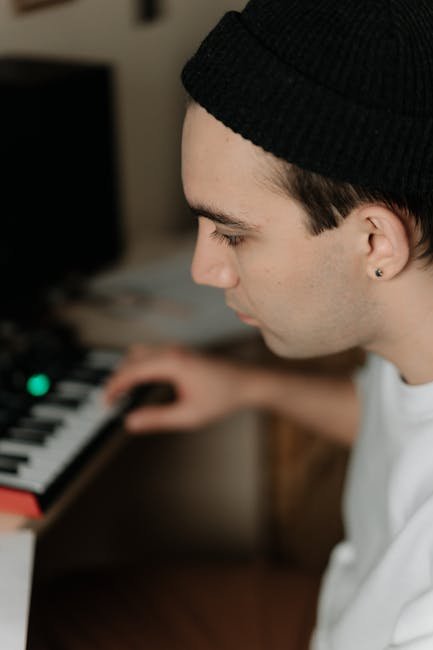Former BioWare executive producer Mark Darrah released the first part of his deep dive into Anthem‘s troubled development this week. It’s almost an hour long and covers a lot of ground, but two important moments during the failed loot shooter’s production stand out. The first was the original EA pitch meeting for the project that would eventually become Anthem. The second was the publisher’s decision not to delay Anthem while BioWare finished Dragon Age 4 instead.
Anthem, originally codenamed Dylan, was the brainchild of veteran Mass Effect director Casey Hudson. “What Casey is pitching to EA is BioWare as a new thing. It’s BioWare doing storytelling but doing it in a live service, always online, brand new business model, brand new way of thinking about the way we tell storytelling,” Darrah says. “A lot of this early vision from Casey doesn’t actually really make it into the final game. But it’s why Anthem was able to generate this much momentum within the organization, because what Casey was essentially pitching was, ‘what if it’s a BioWare game but it could do FIFA numbers?’”
Darrah, another longtime BioWare veteran who was executive producer on Anthem when it shipped and who left the studio in 2021, argues that what Hudson and the team were pitching EA at the time wasn’t just a vision for a new type of story-driven game, but a vision for a new type of BioWare. “As part of this initial pitch period for Dylan, there was a video created that was filmed with the leadership of the team, so Casey and the other leaders, about what the game was going to entail, again in very broad, very arch ways,” Darrah says. “This was a video that I believe was intended to be shown to executives. It had very good cinematography. It was very much presented in, if you imagine the typical early vision video from a slick tech company, it’s very much like that video.”
He continues,
In this video, however, it talks about how a lot of what BioWare has done in the past is old-fashioned and its time has come and gone and that BioWare needs to change and BioWare needs to be something different for what I believe to be the originally intended audience. This is exactly what they want to hear. Executives want to hear that BioWare believes that it needs to change, that BioWare needs to be something different. This is what they wanted to hear in this time period.
Fans often debate about who is to blame when a game goes live service. Was it forced on a development team by the bean counters, or was it something the developers genuinely wanted to make? Often, however, it’s not that clear cut. In the case of Anthem, as with other games like Suicide Squad and Redfall, it sounds more like a combination of the executives in charge wanting BioWare’s next hit to have the revenue potential of a franchise like FIFA, and some of BioWare’s leaders finding a way to promise exactly that while also pitching something that would push the team’s storytelling chops to a new place.
According to Darrah, one of the mistakes leadership made during this time period was showing that video about the need for BioWare to change to the rest of the teams inside the studio, most of whom were still working on traditional BioWare RPG franchises like Dragon Age and Mass Effect. “This was a piece of media that did damage when it was shown to the rest of the BioWare team, and it probably should never have been shown,” Darrah says. It’s hard not to see the roots of that dissonance being at least partly responsible for the identity crisis fans have witnessed in the studio’s most recent games, including Dragon Age: The Veilguard, which was rebooted multiple times, including once as a live service.
Much of the rest of Anthem‘s development, as previously documented by Kotaku, was mired in issues ranging from a lack of clear vision and complications with EA’s Frostbite engine to a year-long rush to get the game out the door once it was finally supposed to ship. It also likely didn’t help that Hudson left BioWare in the middle of Anthem‘s development, leaving a power vacuum when it came to trying to make good on the original promise of how Anthem would take a new approach to storytelling. Despite being the driving force behind the original pitch, according to Darrah, this quality is arguably the biggest element of the original vision for Anthem that never materialized in the finished game.
“[The project had] said before, in the past, through the ghost of Casey Hudson, that it is the future of storytelling, but no one [left there working on it] really knows what that means,” Darrah says. “It’s not even clear if Casey knew what that means. But even if he did, he’s not around to clarify that statement, to be involved in the process of discovering what that actually means.”
The ex-BioWare producer also pointed to another pivotal moment in the game’s development: EA’s decision not to delay it. Despite years in the wilderness, Anthem was finally starting to crystalize by the time of the 2017 E3 announcement. Darrah says he repeatedly argued for the team to be given more time by pivoting the studio to shipping Dragon Age 4 first, the game he’d been working on before being moved to Anthem. It’s impossible to know if Dragon Age 4 being forced out the door before its multiple reboots and Anthem getting an extra year or two in production would have drastically changed things for those projects, and for the studio that’s since been gutted by EA.
Darrah doesn’t present whatever arguments may have been made against doing what he was proposing at the time, so it’s hard to evaluate them. In light of what we now know, however, it’s a counter-factual that’s hard not to think about.


